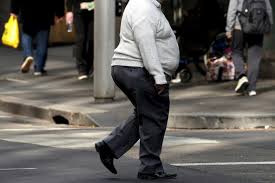34 per cent of Indians insufficiently active: Lancet Study
According to recent study published in Lancet Global Health journal, at least 34% of India’s population is insufficiently active. The levels of insufficient activity were higher among women at 48%, while prevalence was 22 %among men. The study was undertaken by researchers from World Health Organisation (WHO). It was based on self-reported activity levels, including activity at work and at home, for transport, and during leisure time in adults aged 18 years and older from 358 population-based surveys in 168 countries.
Key Findings of Study
Globally, more than 1.4 billion adults are at risk of diseases from not doing enough physical activity as around one in three women (32%) and one in four men (23%) do not do enough physical activity to stay healthy. Levels of insufficient physical activity are more than twice as high in high income countries compared with low income countries.
The highest rates of insufficient activity in 2016 were found in adults in Kuwait, American Samoa, Saudi Arabia and Iraq, where more than half of all adults were insufficiently active. Comparatively, around 40% of adults in United States, 36% in UK and 14% in China were insufficiently active. India was ranked 52nd (with 1 being the most inactive, and 168 being the most active) among 168 countries.
Insufficient physical activity puts people at greater risk of non-communicable diseases such as cardiovascular disease, Type 2 diabetes, dementia, and some cancers. If current trends continue, 2025 global activity target of 10% relative reduction in insufficient physical activity will not be met.
Solutions
Cities needed to be more walk friendly and more opportunities for physical activity in public open spaces and parks in workplaces need to be created. The recommended levels of physical activity are at least 150 minutes of moderate-intensity or 75 minutes of vigorous-intensity physical activity per week. It is also necessary to promote and improve women’s access to opportunities that are safe, affordable and culturally acceptable to address inequalities in physical activity levels between men and women. WHO Global Action Plan on Physical Activity (2018-30) provides selection of policy options targeting different settings and population groups that can be adapted and tailored to local contexts in all countries.
Month: Current Affairs - September, 2018


